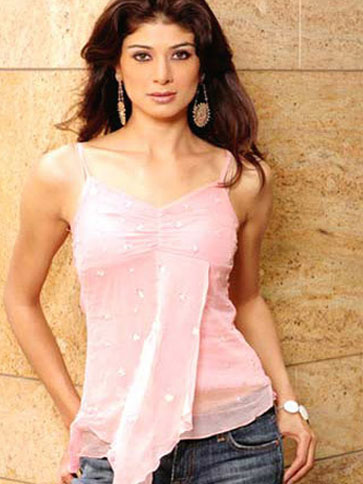 Mumbai, formerly known as Bombay, is the home of Bollywood star Pooja Batra. Mumbai’s population alone is 13 million. And if you take into account the entire population of India being over 1 billion, one could say that Pooja Batra is a bigger celebrity than any one star here in America. Naturally, Hollywood crosses continents, and most blockbusters are translated into several different languages across the globe. But for the dense population that exists in India, becoming a superstar there really carries a lot of weight. I recently interviewed Pooja Batra in her lovely American home, and got a crash course in Bollywood.
Mumbai, formerly known as Bombay, is the home of Bollywood star Pooja Batra. Mumbai’s population alone is 13 million. And if you take into account the entire population of India being over 1 billion, one could say that Pooja Batra is a bigger celebrity than any one star here in America. Naturally, Hollywood crosses continents, and most blockbusters are translated into several different languages across the globe. But for the dense population that exists in India, becoming a superstar there really carries a lot of weight. I recently interviewed Pooja Batra in her lovely American home, and got a crash course in Bollywood.
When looking at Batra’s background, it’s no wonder she took the title of Miss India and stole the hearts of millions on the big screen. Her mother, Neelam Batra, had preceded her a generation prior as a Miss India before Pooja took the crown. Pooja attended Kendriya Vidyalaya, was a good student and athlete, and ultimately received her MBA in marketing from Symbiosis College. She modeled professionally, and after her Miss India victory, catapulted to stardom. In her career, she starred in 22 films, won Best Supporting Actress and was nominated as Most Promising Newcomer forVirasat. In 2006 she was nominated for Best Actress for Taj Mahal-An Eternal Love Story.
At the time of my interview with Pooja, she was preparing to go home to India to climb the base camp of a mountain. She was very excited about it. It was the first time she was officially trekking.
“Every time I go back to India, I read the scripts to see if there’s something I want to do. It’s just great to go back home.”
Tell me a little bit about your acting career.
After you win a title like Miss India, a lot of people come up to you and ask you to be part of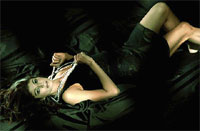 a movie. I did train to be an actor. I got my diction, voice coaching, and whatever the norm was [so that I could be prepared]. My first movie led me to more and better films. I did 22 films, so that was a great journey in my life.
a movie. I did train to be an actor. I got my diction, voice coaching, and whatever the norm was [so that I could be prepared]. My first movie led me to more and better films. I did 22 films, so that was a great journey in my life.
You must have been doing five or six films a year.
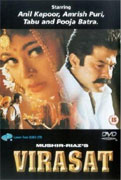 I literally did do five or six films a year! That was a busy phase. And I enjoyed it while I was doing it. It’s just a phenomenal profession to be a part of. It’s amazing to emote and make people happy, cry, set up emotions. It’s such a huge industry. I was lucky that I was part of it.
I literally did do five or six films a year! That was a busy phase. And I enjoyed it while I was doing it. It’s just a phenomenal profession to be a part of. It’s amazing to emote and make people happy, cry, set up emotions. It’s such a huge industry. I was lucky that I was part of it.
How did you get your first role?
I auditioned for it and my director was looking for a fresh face. He somehow liked me without makeup. He liked my expressions, and he said, “You’re my girl.” So there I was. He liked the innocence.
What was it like to win Miss India?
It was probably the best phase of my life. I was 17 when I won it, and for me, everything opened up [after that]. I could practically do anything I wanted. I went from being a nobody to suddenly people knowing my name. I was lucky because there were so many beautiful girls.
When did you land your first role?
I think I was 21. I modeled for about five years and I did not want to get into the film industry. I didn’t know much. I wanted to get the experience of traveling. And modeling is very female based. It’s great money, traveling, and I made great friends. I was enjoying that. When a good role came, I made the transition.
Tell me about the films you’ve been in.
I don’t know if you know about Bollywood movies. They’re mostly singing and dancing. They’re like Moulin Rouge, for a lack of a better example. It’s more like a fantasy land where they take you and they show you the love and emotions. They come up with amazing story lines, sets, and songs.
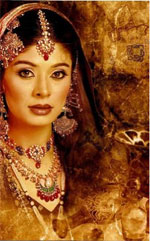 You’ve lived here for how long?
You’ve lived here for how long?
Three years. I go back and forth to India.
Are you still making films now?
I am involved right now in helping my fellow producers and actors in India get here. A [while back] I helped a producer acquire two Hollywood actors for a Bollywood movie. I knew their agents and managers, and I sort of put the deal through. So this is the first time in a proper legit Bollywood movie that Hollywood names?and big names?did cameos. That’s what I did. I am helping as much as I can because I’m proud of who I am. If somebody needs anything from here, I help them. I helped to acquire Sylvester Stallone and Denise Richards for this project.
Are you looking to possibly do films out here?
Yes. I would love to. It’s just a different setup here. The market hasn’t really opened up to me or my kind of people. So until it does, I’m polishing my craft.
You’re right. It’s an untapped demographic in film.
A little bit in television because the scale at which Indians are doctors and lawyers. They would try and show them, but not as much.
You don’t really see them starring as much.
Not as much, but maybe it will open up. Because now anywhere you go, the fifth person literally is an Indian.
In regards to having a hand in merging American stars with Bollywood, you have moved from beauty queen–to being in front of the camera–to literally being in the background.
Only vocationally. This is something that fell in my lap. I took it as a challenge and I did it. It was fun. It’s a great achievement, a sense of validation. And then it does [well] for everybody. It opens up another country and fan base for them (India), which is huge. India’s booming right now. They have the money. Their technicians are amazing. Their stories are great. So why not?
How would you say the transition was from India to the United States?
It was very hard. The first three years of my coming here and trying to adjust were miserable. People couldn’t understand my accent. It was hard. Just the sense of belonging didn’t happen. I think I had to get out of the mold of just being in my community and friends. I had to figure out how to be a part of society. In New York it was so easy. Anybody from any part of the world can come there and be a New Yorker. Here, it’s a little hard. The first two years were hard, but now I love it. I have great friends, a great husband . . . I have a good setup, and now I just love it.
India has the densest population in the world?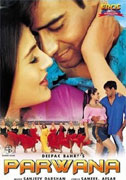
Yes, per square foot. I think China has the most.
Was that an interesting change for you the first time you came here?
Yes, because I am used to a lot of people around me, in front of me, everywhere. Here, when you come per square feet, people are limited. Even when you go out driving, there’s one person in the car as opposed to the entire family like in India. But L.A. does have a somewhat dense population.
As far as acting, you’re on hiatus until a break comes for you out here?
I would say yes. If something good comes from India, I’m more likely to do a project from start to finish. In India everything depends on the actors. They do six to seven movies at a time in a year. Not just one at a time. So when you get a movie, you’re literally going back every month. And that’s not cost effective for the producer or for me.
What is casting like in India?
It’s very lenient. There are no proper casting directors. My casting for my movies consisted of sitting across from the director. He would look at me and he’d say, “Okay, she can do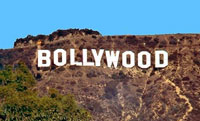 expressions.” Or I’d just learn a monologue. Here, it’s a totally different process. The filtering in over here is very hard. It’s almost unheard of to give somebody a break. Here, even if you see a pretty girl, she’s done a body of work already.
expressions.” Or I’d just learn a monologue. Here, it’s a totally different process. The filtering in over here is very hard. It’s almost unheard of to give somebody a break. Here, even if you see a pretty girl, she’s done a body of work already.
It seems as though the film industry in India is very similar to how the movie industry originally started in Hollywood.
That’s exactly how it is in India right now. The movie-making style is old Hollywood, old classic Hollywood.
Yes, very glamorous, I think.
Realistic films work [in India] but not as much. The audience wants to see “happy.” The audience wants to see Switzerland. The audience does not want to see the streets of Bombay [Mumbai].
Obviously there are films that are made that are serious.
Yes, lower budget, independent films are more realistic.
Highest High
I have had amazing highs in my life: making a box office hit, winning Miss India, acting out a good scene. But the highest high? It’s really like a series of highs. So far I would say the highest high was winning my pageant. I was stunned.
Lowest Low
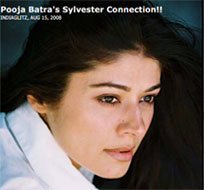 A movie not doing well. But this is so temporary. It’s the living in the now and being present now and being happy in the moment. That’s what is most important. You could hit the highest high, but if you’re not enjoying it, there’s no fun in it.
A movie not doing well. But this is so temporary. It’s the living in the now and being present now and being happy in the moment. That’s what is most important. You could hit the highest high, but if you’re not enjoying it, there’s no fun in it.
When you go back to Mumbai, you’re very recognizable. What is that like?
It’s a good feeling. People come up and ask me how I’ve been, what am I working on next . . . . It’s nice.
What advice would you give to someone who’s aspiring to accomplish what you’ve accomplished?
I would say go for your dreams and your goal, and be prepared. Do your homework and do your research. Life is very short. If you don’t take chances, you’ll never know. What matters most [in acting] is if you’re able to convey the emotions when portraying a character.
What was your most challenging role?
My most challenging role is still to come. If I’ve done it, it’s not challenging anymore.
Visit www.poojabatra.com for updates and to learn more about Pooja Batra.
See the fashion editorial of Pooja Batra photographed by Ash Gupta Studio 838.
Interviewed by Kaylene Peoples